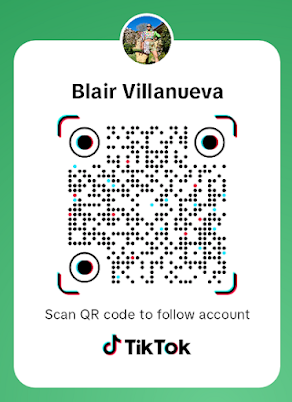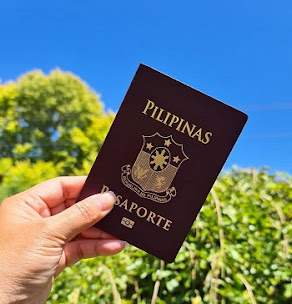Getting around in China can be tough for newcomers, and even tougher if you’re short on cash. As a fairly recent college graduate without much to spare myself, I’ve compiled 12 apps I used or really wish I had known about when I first arrived in the country. May your travels be merry and many!
Waygo
 Waygo is a translator with a specific vocabulary: food and transport. All you do is hold your iPhone camera over the Chinese text, line it up in the box, and when the app recognizes the characters, the box turns orange and you get a proper translation. Waygo doesn’t claim to be a complete dictionary, you just get a couple of words rather than a befuddling list of definitions — enough so that you know what you’re ordering or where you need to go. It’s far superior for these purposes compared to your average dictionary app and doesn’t require an internet connection.
Waygo is a translator with a specific vocabulary: food and transport. All you do is hold your iPhone camera over the Chinese text, line it up in the box, and when the app recognizes the characters, the box turns orange and you get a proper translation. Waygo doesn’t claim to be a complete dictionary, you just get a couple of words rather than a befuddling list of definitions — enough so that you know what you’re ordering or where you need to go. It’s far superior for these purposes compared to your average dictionary app and doesn’t require an internet connection.You can also translate several lines of characters at once, which is a clear time-saver when you’re tackling a menu, be it a Western or Chinese cuisine. Your first 100 translations are free (each individual line of text counting as one translation), after which time you’re limited to 10 per day. If that’s not sufficient, then you’ll need to upgrade to the paid service, a one-off payment of GBP 11 ($18). An Android version has been promised for sometime, but isn’t available yet.
Pandabus
Without knowing any Chinese, buses in China can be near-impossible to take advantage of. Unlike subway systems, nothing is in English, and the names of stops aren’t indicated on an electronic display. This app for finding nearby public buses is invaluable, then. Pandabus, which comes in both English and Chinese, uses your phone’s GPS to locate and show all the buses in the area, where they are going, and how often they run.
Real-time bus tracking is not available, unfortunately, but you can at least get a better idea of how long you’ll have to wait. It works in more than 300 cities nationwide and is available for free on both iOS and Android.
Real-time bus tracking is not available, unfortunately, but you can at least get a better idea of how long you’ll have to wait. It works in more than 300 cities nationwide and is available for free on both iOS and Android.
Didi Dache and Kuaide Dache
Which of these taxi-hailing apps is better in which cities is debatable, but I would generally go with Didi in northern China and Kuaide in southern China. The apps will locate nearby taxi drivers also using the app. There are some minor differences between the two apps, but the process is more-or-less identical: input how much extra you wish to pay the driver (limited to 5 RMB in Beijing) to come pick you up, where you want to go, how long you’re willing to wait, etc. Once a driver has agreed to pick you up, the app will return the taxi’s info so you can identify which one you have booked. The apps also let you rate the driver based on performance and response time. Both are available on iOS and Android, but unfortunately only in Chinese.
Baidu Maps and Google Maps
Baidu Maps‘ user interface only comes in Chinese, but in my experience it is more accurate and up-to-date than Google Maps. If what you’re searching for has an English name, Baidu will still usually return relevant results. It also does fairly well with pinyin for those who don’t have Chinese input installed on their phones. For me, the GPS seems more reliable than Google Maps. Baidu Maps is available on Android and iOS.
Google Maps is generally my second resort after Baidu Maps. It might not be as detailed or up-to-date, but the interface, street names, and landmarks are all in the English alphabet. It’s also available on both iOS and Android.
ExploreMetro
Metro and subway map apps are a dime a dozen and can be found for any city with a simple Google search. For Shanghai, Guangzhou, and Beijing, I suggest the Explore Metro apps for iOS and Android, which have straightforward subway and metro navigation with route planners, train times, and a street map of the area nearby each station. Subway lines are of course included in Baidu and Google Maps, but a separate map makes things more clear.
Pleco or Hanping
It’s always good to have a dictionary on hand in a pinch, and both Pleco and Hanping are solid choices. The free versions are limited, but camera recognition and handwriting input are available on both for a price. They are far more detailed than Google Translate (see below) when you’re looking for relevant correct words. Search in English, pinyin, or Chinese, and you’ll get a list of results followed by near-matches in case you mistyped something. Pleco works on both Android and iOS, but Hanping is only for Android.
Google Translate
Even though translation quality often sucks, Google Translate does come with free character recognition via your smartphone’s camera. Take a snapshot of some Chinese text, highlight what you want translated with your finger, and voila! It’s quick and easy, but you don’t get the same level of detail as the other dictionary apps. Google processes the text as a whole and doesn’t really parse out the individual characters, but it gets the job done. Just remember that you’ll need an internet connection. Google Translate is available for both Android and iOS.
China Trains
We recently reported on the Railway Ministry’s new train ticket booking app. It’s terrible, and the app was removed from their webpage just hours after launch. It remains missing in action as of press time, so as an alternative, I suggest Travel China Guide’s China Trains app. Find and book train tickets just like you would a plane ticket, and have them delivered to you. The tickets come at somewhat of a premium, though. The app tacks on a $12 service charge. The app is available on iOS and Android. In all honesty, you might be just as well off buying tickets in person at one of the many shops that sell them or at the actual station.
TouchChina
TouchChina makes maps with built-in audio guides for more than 100 tourist spots nationwide. You can download the comprehensive app with all of them or install them individually. The app works offline and features professional audio guides for tons of hotspots and attractions within the larger tourist sites. The apps unfortunately don’t use GPS to monitor your exact location on the map, but you can still get a good idea of where everything is.





























Useful article About 12 essential apps for China travelers on a budget. Really best experience you shared. Here is aonther best Metro Airport Taxi services.
ReplyDelete